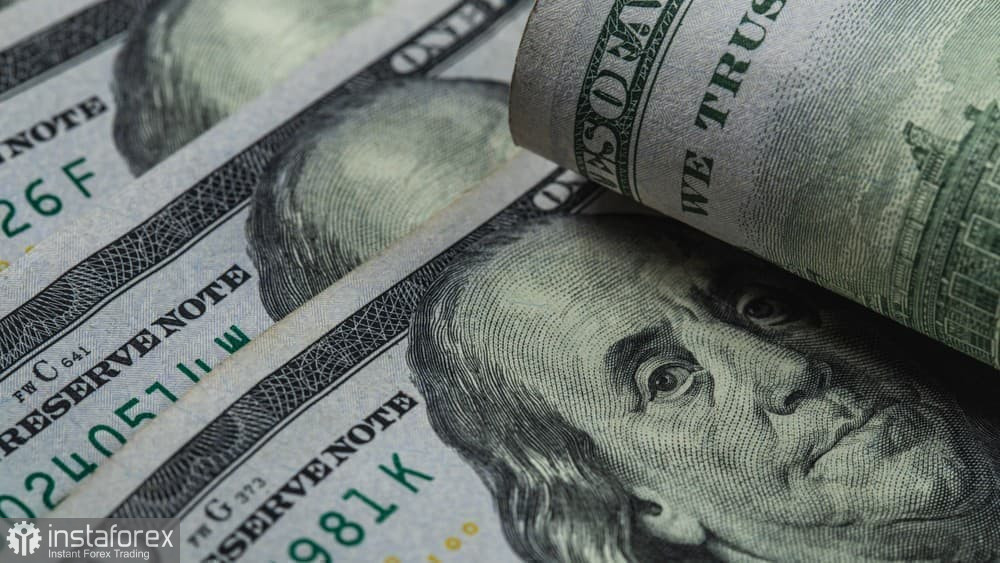The EUR/USD pair is trading in the range of 1.0940–1.1040, reacting impulsively to conflicting fundamental signals. Traders are still unable to determine the price direction, clearly being in a state of confusion. Therefore, the increased intraday volatility resembles more of a storm in a teacup: market participants are trading within a 100-point corridor and (so far) are unable to settle below or above the indicated levels.

For example, on Monday, EUR/USD buyers attempted a corrective pullback after the publication of data on inflation growth in the Eurozone and European economic growth. All components of these reports came out either at the forecast level or in the "green zone." In particular, the core consumer price index in July remained at 5.5%, while most experts predicted a minimum decline to 5.4%. The Eurozone GDP grew by 0.3% QoQ in the second quarter, with a forecast of 0.1% growth (considering that in the fourth quarter of 2022, the indicator was at -0.1%, and in the first quarter of 2023, it was at zero).
This information background allowed EUR/USD buyers to retest the 1.10 level. However, they could not hold their positions: the pair ended the trading day below the 1.1000 level. A similar situation occurred the next day, Tuesday. EUR/USD buyers took advantage of the weakening greenback, which reacted to the publication of the ISM manufacturing index. The release was quite disappointing: instead of the forecasted decline to 47.0, the indicator only rose to 46.4 points, again entering the "red zone." The index has been below the key 50-point level for nine consecutive months. Such a result disappointed dollar bulls, allowing buyers to revisit the 1.10 area, but not for long – only for a few hours.
A similar situation happened on Wenesday. In the first half of the day, the pair jumped to 1.1021, but at the start of the American session, it returned to the lower boundary of the aforementioned price range and even dipped below to 1.09 level.
This time, the dollar was supported by the ADP employment report. As known, the report is a kind of harbinger ahead of the official data release. The July Nonfarm Payrolls will be published Friday, so traders reacted sharply to Wednesday's "preview." Moreover, the ADP report was in the green zone, almost twice exceeding the forecast estimates. According to preliminary forecasts, the number of private sector employees grew by 180,000 in July. However, according to ADP experts, the number of jobs created in this sector increased by 324,000. Such a result led to the assumption that Friday's Nonfarm Payrolls will also be in the green zone.
Furthermore, the dollar is in high demand for another reason. The greenback is benefiting from increased risk aversion sentiment in the markets. The reason for the nervousness spike was the decision of the international rating agency Fitch, which announced a downgrade of the U.S. government's credit rating to AA+ from AAA. The agency's specialists justified their decision by the expected deterioration of the budget situation in the next three years and the high (while increasing) burden on the total national debt.
Thus, the current fundamental background does not allow EUR/USD buyers to turn the situation in their favor. Any attempts at an upside counterattack end in failure, and quite quickly. Sellers dominate, but they are not able (at least for now) to establish themselves below the 1.0940 target. It is important to emphasize that to confirm a bearish trend, EUR/USD bears need to establish themselves below the support level of 1.0940 (the lower Bollinger Bands line on the H4 timeframe) and not just puncture this price barrier impulsively.
In fact, despite the prevailing bearish sentiment, EUR/USD traders are stuck in place, trading in the range of 1.0950–1.1020 (1.1050). Under such conditions, opening short positions is not advisable as there is a risk of hitting a "price bottom." It makes sense to enter short positions only after sellers confirm the strength of the bearish trend by establishing themselves below the lower Bollinger Bands line on the four-hour chart. If this does not happen, buyers will regain initiative on the pair and attempt to overcome the resistance level of 1.1050 (the Kijun-sen line on the daily chart).
The situation is a stalemate, and is likely to remain so until the release of July Nonfarm Payrolls (scheduled for Friday, August 4th). According to preliminary forecasts, the U,S, unemployment rate in July should remain at 3.6%, and the number of employed in the non-farm sector should increase by 200,000 (175,000 in the private sector). Wednesday's published ADP report, which turned out to be much better than expected, could be bearish for the dollar as it effectively forms corresponding market expectations. And if Nonfarm Payrolls end up in the "red zone," the greenback will be hit by a wave of selling. Therefore, current price fluctuations should be viewed skeptically: as of writing, there are no strongly expressed fundamental factors that would indicate the formation of a sustainable bearish trend.
 English
English 
 Русский
Русский Bahasa Indonesia
Bahasa Indonesia Bahasa Malay
Bahasa Malay ไทย
ไทย Español
Español Deutsch
Deutsch Български
Български Français
Français Tiếng Việt
Tiếng Việt 中文
中文 বাংলা
বাংলা हिन्दी
हिन्दी Čeština
Čeština Українська
Українська Română
Română

